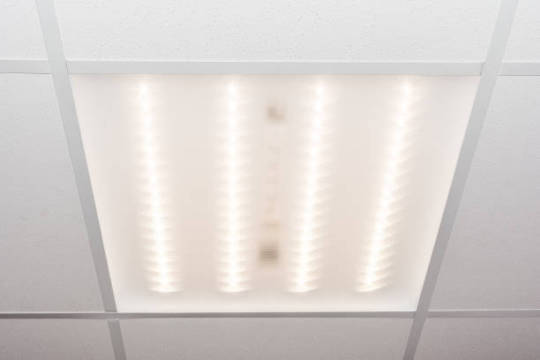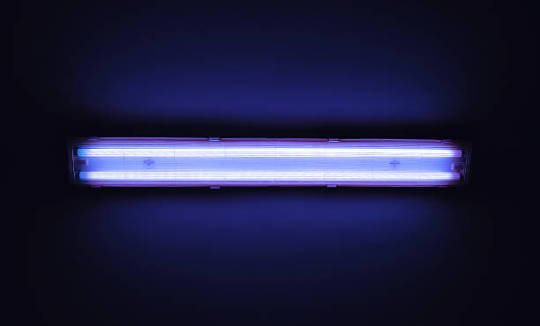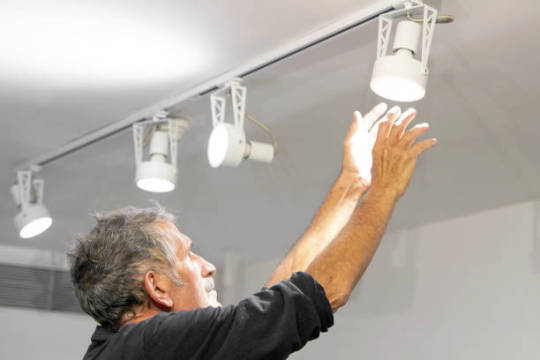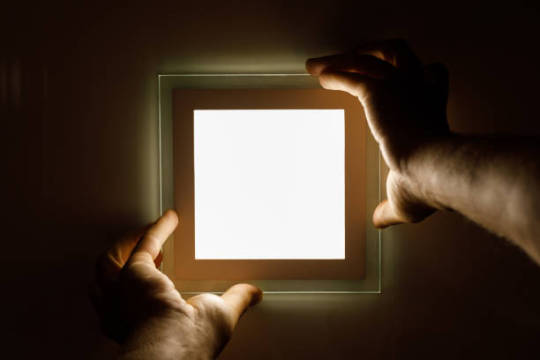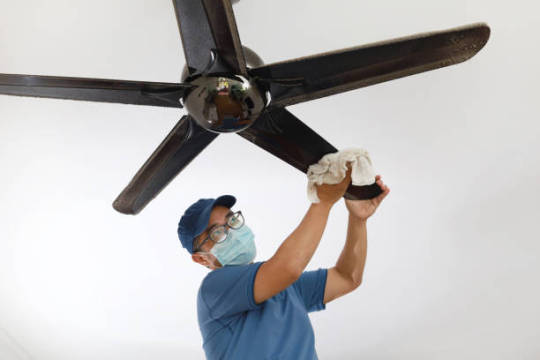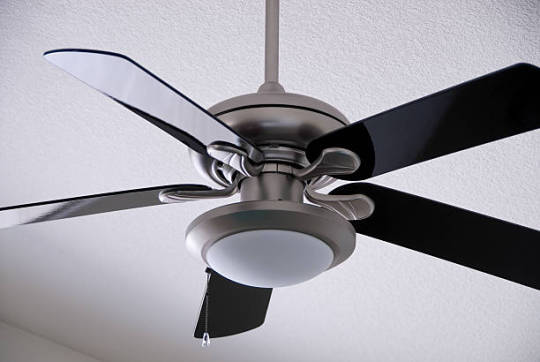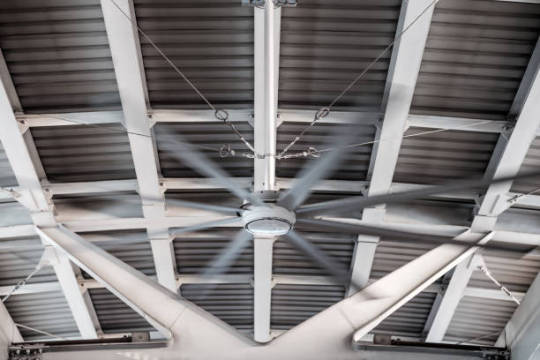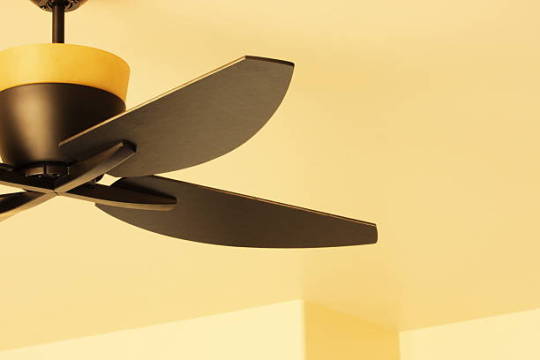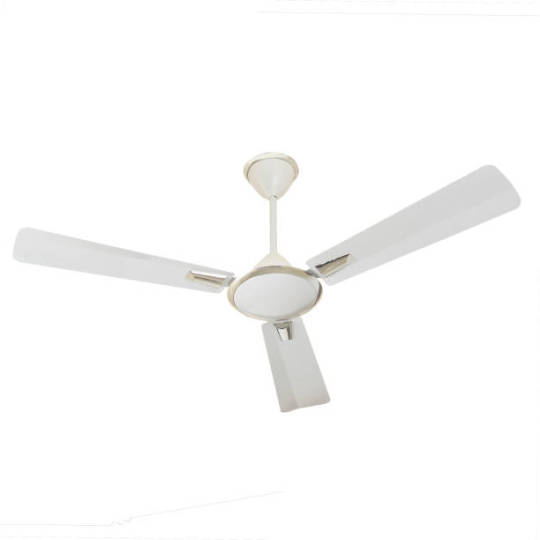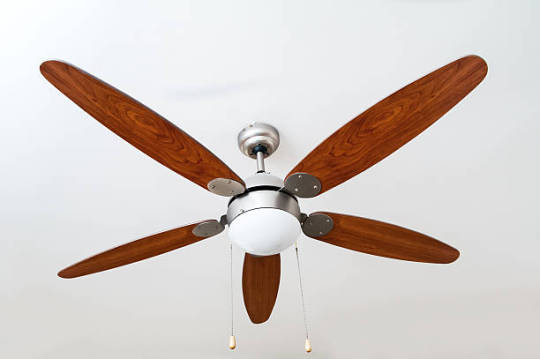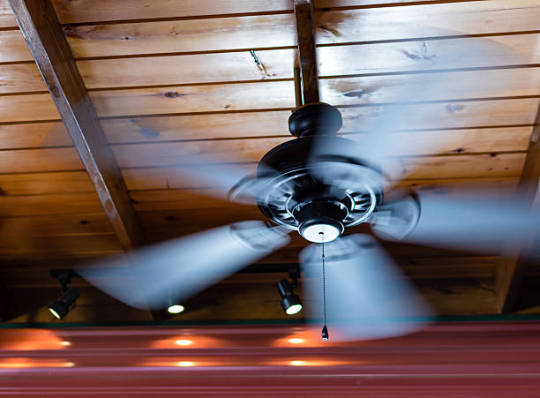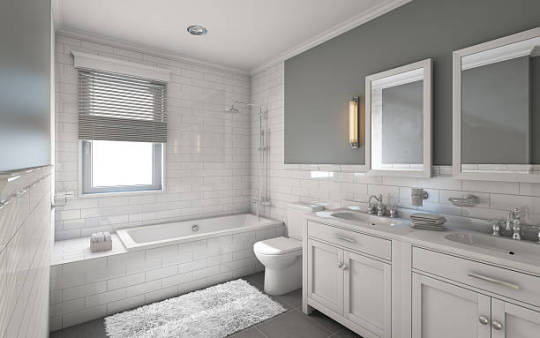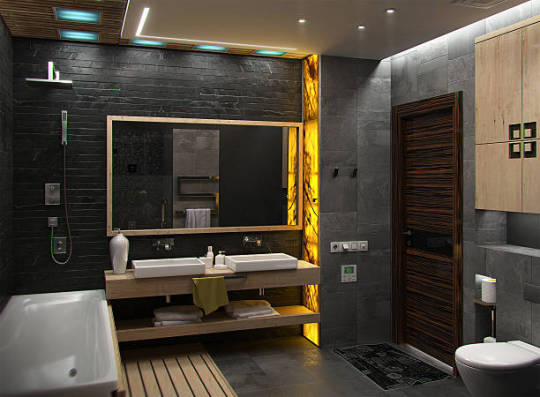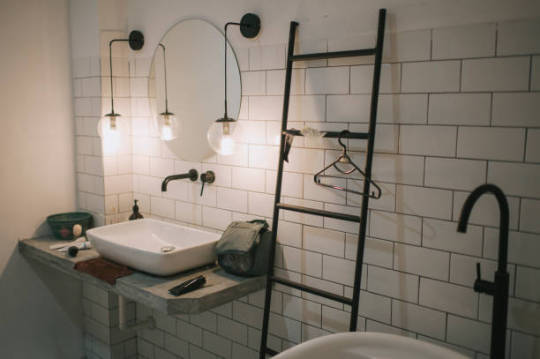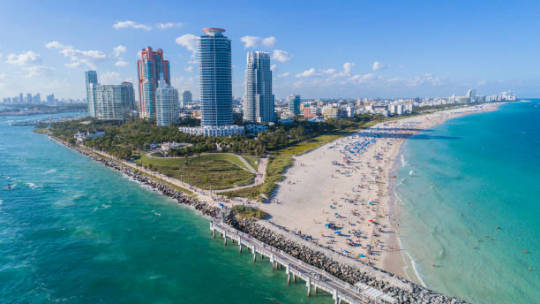Text
https://www.google.com/search?q=site%3Aelectrician.network&sxsrf=APq-WBsYBhjGf6P7P4uuPe8V_NS0utniew%3A1648122842335&ei=2ls8YqWHFN2SwbkPyrGLmAw&ved=0ahUKEwil3MCE2N72AhVdSTABHcrYAsMQ4dUDCA0&uact=5&oq=site%3Aelectrician.network&gs_lcp=Cgdnd3Mtd2l6EAM6BAgjECc6BQgAEJECOgsIABCABBCxAxCDAToRCC4QgAQQsQMQgwEQxwEQ0QM6CAgAEIAEELEDOgUIABCABDoOCC4QgAQQsQMQxwEQ0QM6BQguEIAEOgoILhCxAxDUAhBDOgoILhDHARDRAxBDOgQIABBDOggILhCABBCxAzoICC4QsQMQgwE6FgguEIAEEIcCELEDEIMBEMcBEKMCEBQ6CAgAELEDEJECOhEILhCABBCxAxCDARDHARCjAjoUCC4QgAQQsQMQgwEQxwEQ0QMQ1AI6BwgjEOoCECc6CwguEIAEEMcBEK8BOgsILhCABBDHARDRA0oECEEYAUoECEYYAFDzClitVGDOVmgCcAB4AIABkAGIAfETkgEEMzEuMpgBAKABAbABBcABAQ&sclient=gws-wiz
0 notes
Text
Lights Continuously Flicker
Wet Electrical Breaker PanelAn Electrical Fire Happened What Makes Up the Cost of An Emergency Electrical Repair?
Faulty Interior and Exterior Wiring Repair
Circuit Breakers
24 hr. Emergency Electrical Service
Did you know that electrical problems cause about one-third of all structure fires? Electrical hazards are not something to take lightly. Understanding when your situation requires emergency assistance is the first step – even if you suspect a potential danger, it’s always safest to connect with a local emergency electrician. That’s why our team at Electrician Network is here help 24/7
24 Hour Electrical Repair
For your safety, hiring a professional avoids potential electrical shock and fire hazards while ensuring all work is code compliant. When you work with Electrician Network , you’re receiving quality emergency services – we’ll repair the problem and ensure no further hazards are lurking that may pop up soon.
24 Hour Emergency Electrician
Our emergency electricians have just one goal – to get your power restored! Until your lights are on and the ac is comfy enough , we aren’t finished. You’ll be delighted at how positive and punctual our electricians are as well. Not only can we fix your electrical issue, but we understand that electrical emergencies are stressful and won’t add to your worries.
Types of Emergency Repairs
Most of the time , electrical issues with wiring can lead to a genuine emergency. If you need more information , give us a call, and we can help diagnose your situation. You’re not alone. Some of the common indicators of an electrical emergency include:
Circuit Breaker Keeps Tripping Repeatedly
There are a few reasons for a circuit breaker to keep tripping, including:
The circuit breaker box is going bad
A circuit overload the breaker box cannot accommodate
A ground fault is occurring, meaning a hot wire is touching the ground
An appliance or wire is short-circuiting, meaning the electrical flow has gone outside the intended circuit
Humming and/or Buzzing Sound in Breaker Box
Little bit of humming or buzzing sound is natural , however, if you notice the buzzing or humming getting repeatedly louder, you may want deal with it quickly as it may mean the circuit breaker is overloaded. An overload heats the circuit wiring and can cause damage.
Unidentified Burning Smell
Are your smoke detectors being set off? Does the smell linger or come and go? You may want to inspect your appliances, all your outlets, ducts, and your breaker box to see if you can find the source of the burning smell.
Smoke Coming from an Outlet
A common issue with outlets is when dirt/dust builds up within. Electricity transfers to the dust and/or dirt, which causes arcing. Arcing creates heat, which is an immediate indicator of an electrical emergency that may start a fire. Other problems that can cause outlets to smoke include wiring issues, loose plug-in connections, and connecting too many devices to one outlet.
If your lights flicker sometimes , it’s likely a minor problem with your lightbulb or a switch. When they constantly flicker this signals a deeper problem such as a circuit overload, excess voltage, or loose wiring.
Person Received an Electrical Shock
We need to be very careful when:
Old outlets that are two-prong and therefore have no ground wire as a safety barrier
An outlet or switch with loose screws or wiring makes the electrical current unstable
Faulty appliances, including frayed wiring or broken cords that shock you when you plug them in
Water sources near electricity, or touching outlets with damp hands
Loss of Power
We experience loss of power from storms or when everyone on the block loses power due to a problem with the electrical provider company. But when you are on time with your monthly electric utility bill, and you’re the only one in the area to lose power, it could be a bigger problem with your breaker box that needs immediate diagnosis.
When water mixes with electricity, there is a high potential for electrocution. Water can get into your electrical panel through an improper seal on the box or soak through older cables of a meter box and through to the panel. If this has been happening for a longer period, corrosion can ruin multiple components of your electrical panel and increase resistance in the circuits causing more heat production, thus also creating a fire hazard.
If a fire is actively happening , you need to call 911 and get the fire put out immediately. Once there is no longer an immediate threat to your home or family, call a certified emergency electrician. Electrician Network inspect and diagnose the source of the fire before performing repairs and putting preventative measures in place or replacing the system if it has been fully compromised.
How Much Does an Emergency Electrician Cost?
You can rest easy knowing that Electrician Network prides itself on providing quality electrical service at a fair and honest price.
Many Factors contribute to the cost of hiring an emergency electrician.
Location - If your electrician travels far to provide repair services, you can anticipate fees to cover mileage. The area in which you live may also be a factor – if you’re in a large, populated city vs. residing in a rural community.
Time - You can expect your electrician to bill for their time, so you should inquire as to whether the charges are a flat rate or by the hour.
Expertise & Certifications - The experience of your electrician will factor into your pricing – whether they’re an apprentice, journeyman, or master electrician. Certifications for specific services will also influence pricing as your electrician will be more knowledgeable on your specific need.
Parts Required - Replacement parts are one of big factors of cost. Your emergency electrician will discuss deeply with you the cost of the parts. Depending on the parts you need, you can anticipate cost better. For example, replacing one faulty wire will cost less than rewiring an entire system.
Distance -Electrician Network owned and operated locally, making electricians consistently available to dispatch a service team that’s closest to your home.
Emergency Electrician Services :
Having safe, reliable electrical systems in your house is an absolute necessity for your peace of mind. When you are ready to upgrade your current wiring, or rewire systems for a remodeling project or to ensure safe electrical performance, our team is ready to help!
Some of the typical wiring repairs our team conducts include:
Hot tub & pool wiring
Aluminum wiring
Computer wiring
Entertainment center wiring
Your circuit breaker box is the heart of your home’s circuitry and electrical system. If you need repair to your circuit breakers, its is best to consult with only the most experienced electricians. Here at Electrician Network , we’ve successfully repaired and installed thousands of circuit breakers. You can count on us to treat your home as if it were our own, and carry out your electrical panel repair with mastery and care.
Whether you need a repair or replacement, updated circuit breakers help prevent:
Power surges
Power interruptions
Broken connections
Electrical fires
Power Outages and Power Surges
Electricity is more and more important to the comfortable operation of our homes. Thunderstorms can cause major damage to your home electrical system, even without striking your home, simply by overloading your household circuits with damaging overcharge. Prevent damage to your electronics, appliances, and digital life with a Miami household surge protector. Installed correctly, household surge protectors prevent this damage easily. Our team of expert electricians at Electrician Network have deep experience, knowing the ins and outs of installation as well as carrying the best surge protectors.
Electrical Panels Repair
The electrical panel is the heart of your home’s electrical system – while you may only notice the fuse box when it acts up, our electricians have deep experience installing, maintaining, and repairing electrical panels (which are also called fuse boxes or circuit breaker boxes). Let us help you if you are looking for a reliable Miami electrician who is qualified to repair your electrical panel!
Signs of an electrical panel emergency include:
Appliances either not working or not working well
Persistently flickering lights
Consistently tripping breakers
Breaker box crackles or loud buzzing noises
Generator Repair
If you need emergency generator repair during a black out or storm, our emergency electrician can help you get back on your feet.
Whether you have (or want to have) a permanent generator or hookups for a portable generator, you can rely on the Electrician Network team for reliable service.
Ceiling Fan Repair
Whether your ceiling fan isn’t working as fast as it should, is making issues , or shaking precariously, let Electrician Network handle it for you . We’ll ensure the switch or controls are working properly and can create separate switches for your light and fan. If you’re replacing a ceiling fan, we can work with you to decide what type of fan is best for your home and budget.
Smoke Detector Repair
Smoke detectors should be replaced every five years to ensure it’s completely safe, and there should be a battery backup hardwired in case of emergency. As one of the most critically important components of your home’s protection system, you’ll need a team who can conduct electrical repairs and innerstand when a replacement is best the option for you .
Electrical Switches & Outlet Repair
Our licensed and insured local electricians are the best in the Miami area. Whether you need emergency repairs to fix shorted wires or blown circuits, or if you want an estimate for a planned rewiring or home remodeling project, we are here to support you. The electricians at Electrician Network are ready to expertly complete your project, whenever you are ready to begin.
Lighting Repair
With electrical lighting repair, we can customize lighting to match your ambience and increase energy efficiency in your home. Our team thinks of your needs first, helping you align your lighting needs with your budget and style. Whether your recessed lighting isn’t working properly, or you’d like to replace your old lighting system with something more cost-effective, Electrician Network is here to assist you .
Fault Location and Repair
If and when there is an unusual electric current flow, it’s considered a fault. There are two different types: Short circuit and open circuit. Determining the correct location and source of a fault is crucial to performing the proper repair to avoid further damages, hazards, and power interruption.
24-Hour Electrician Available for All Electrical Emergencies. Call Now!
Electrical problems could be risky and dangerous , because electrical problems can place your entire home at risk. Electrical issues cause approximately one-third of all structure fires and can endanger your house, your future, and your family . When you’re dealing with an electrical emergency, there’s no time to waste—that’s why Electrician Network offers 24-hour emergency electrical services, 7 days a week, 365 days a year. Our highly qualified electricians provide fast, safe, and durable repairs as soon as you need them.
0 notes
Text
WE OFFER A VARIETY OF ELECTRICAL SERVICES
We offer a multitude of electrical services such as lighting repairs, electrical home safety, outlets and dimmer repairs, troubleshooting whole home generators and more! No matter what electrical service you need, our licensed, insured and background-checked technicians will be there to assist you. Our employees truly care about our customers—they will always wear shoe covers and lay down floor tarps to protect your home from the mess of the work. With our red carpet treatment and high-quality electrical services, we will be sure to leave your house in even better condition than we found it!
AFTER-HOUR SERVICE
We know that electrical emergencies don’t always happen during business hours. That’s why our team of licensed, bonded, insured and background-checked electricians will be available to fix your electrical problems after hours. Call today to learn more about after hour services that you can count on. No matter when and where, the team at Electrician Network is sure to get the job done!
ABOUT US
We are dedicated to bringing you electrical services of the highest quality! Although our company is family owned and operated, we make it a priority to background check and drug test all technicians. This way, you can trust us to solve your electrical problems and respect your home. When you call our live call center for assistance, they will send out a licensed technician the same day. We will even call you before dispatch to make sure we fully understand your problem. Once the service is done, we will call after to make sure you are 100 % satisfied. If not, you will get your money back—that is a guarantee!
We have serviced neighborhoods throughout the Miami metropolitan, with a mission to provide professional and affordable experience. Our top-notch trained electricians are friendly, curious and eager to tackle any electrical issue you have. We back up our workmanship by our limited l warranty, which warrants our workmanship to be done in good and workmanlike manner in accordance with accepted trade practices and the National Electrical Code. Warranty shall extend for the normal life of the installation. Your satisfaction with us is guaranteed.
OUR FEATURED SERVICES
Our Electricians in Miami Beach Can Protect your home or business
Having a safe home or business is a major concern for our team of Los Angeles electricians. Each Los Angeles electrician that we employ is guaranteed to be an expert in the following Miami Beach electrical services:
Child Proof Outlets
Electrical Safety Inspections
Dedicated Computer Circuitry
Whole House Surge Protectors
GFCI
Code Updates and Corrections
Wiring Upgrades
Home Re-Wiring Services
Circuit Breaker Replacements
Breaker Panel Service and Repair
Troubleshoot Minor Home Electrical Issues
Our Miami Beach Electrical Contractors can install commercial or residential equipment and appliances
When it comes to both commercial and residential properties, our team of electricians in Miami is always the one to call. Our Miami Beach electrician can provide you with the following commercial and residential electrical services:
Electrical Panel Upgrades
Circuit Installation and Updates
Ceiling Fan Installation
EV Charger Installation
Generator Installation and Maintenance
Commercial Energy Audits
Commercial Electrical Panel Upgrades
Exhaust Fan Installation
Solar Energy Systems
Commercial Generators
CO Detectors and Smoke Detectors
Power Conditioners
Power Consumption Meters
Let Our Miami Beach Electrician upgrade the lighting inside and outside your building
Thinking about upgrading your external or internal lighting in Miami Beach and the surrounding areas? Well, then you've come to the right place! Let our team of Miami Beach electrical contractors handle all your Miami Beach internal and external lighting needs! Our team of electrical contractors in Miami Beach is proficient in the following types of lighting services:
Commercial Specialty Lighting
Ballast and Bulb Replacement
Flickering Lights Repair
Landscape Lighting
Holiday Lighting
Light Dimmers and Timers
Bathroom and Kitchen Lighting
Recessed Lighting
Track and Accent Lighting
Retrofit Lighting
Transformers
Lighting Controls
Motion Sensors
WHY CHOOSE ELECTRICIAN NETWORK ?
Licensed, insured and bonded
Same Day Service
Emergency Electrical Service 24 hours a Day 7 Days a Week
Residential Electric Service
Commercial Electric Service
Owner takes your call and works on your job!
All Electrical Repairs and Electrical Upgrades
New Electrical Installation
Quality craftsmanship
Discount Pricing
Landscape Lighting Installation
Home Electrical Inspections
Highly rated and trusted your Miami Beach Electricians are certified, licensed electrical contractors in the State of Florida for over 40 years. Electrician Network is a Miami Beach electric company with electricians throughout the greater Miami Beach area. We value our customers by giving them the highest level of expertise, integrity, reliability, honesty and value. Our electricians keep up to date with the latest electric codes and electrical products. The vast majority of our electrical work in the Miami Beach community comes from referrals. That is why our electricians regard customer satisfaction as an integral part of our business.
Our electricians electrical experience Saves customers money.
Since we have been in business over 40 years our electricians have immense electrical experience. This experience benefits our Miami Beach customers by our ability to provide many electrical options to getting a job done. Our electrical knowledge and experienced electricians allow us to find electrical solutions fast when it comes to electrical problem solving. This in turn saves our customers time and money. Electrician Network uses the best electrical testing equipment with electricians that use the latest electrical practices and techniques to solve and repair any electrical problem you may have.
0 notes
Text
Smart Home Services
Smart home technology is a game changer, offering homeowners the ability to manage their homes anywhere from device. Electrician Network offers a variety of smart home services tailored to make your life easier, your electric bill lower and your home and family safer.
A smart home refers to a convenient home setup where appliances and devices can be automatically controlled remotely from anywhere with an internet connection using a mobile or other networked device. Devices in a smart home are interconnected through the internet, allowing the user to control functions such as security access to the home, temperature, lighting, and a home theater remotely.
A smart home allows homeowners to control appliances, thermostats, lights, and other devices remotely using a smartphone or tablet through an internet connection.
Smart homes can be set up through wireless or hardwired systems.
Smart home technology provides homeowners with convenience and cost savings.
Security risks and bugs continue to plague makers and users of smart home technology.
How Smart Homes Work
A smart home’s devices are connected with each other and can be accessed through one central point—a smartphone, tablet, laptop, or game console. Door locks, televisions, thermostats, home monitors, cameras, lights, and even appliances such as the refrigerator can be controlled through one home automation system. The system is installed on a mobile or other networked device, and the user can create time schedules for certain changes to take effect.
Smart home appliances come with self-learning skills so they can learn the homeowner’s schedules and make adjustments as needed. Smart homes enabled with lighting control allow homeowners to reduce electricity use and benefit from energy-related cost savings. Some home automation systems alert the homeowner if any motion is detected in the home when they're away, while others can call the authorities—police or the fire department—in case of imminent situations.
Once connected, services such as a smart doorbell, smart security system, and smart appliances are all part of the internet of things (IoT) technology, a network of physical objects that can gather and share electronic information.
Smart homes can feature either wireless or hardwired systems—or both. Wireless systems are easier to install. Putting in a wireless home automation system with features such as smart lighting, climate control, and security can cost several thousand dollars, making it very cost-friendly.
Hardwired systems, on the other hand, are considered more reliable and are typically more difficult to hack. A hardwired system can increase the resale value of a home.
Installing a smart home technology system provides homeowners with convenience. Rather than controlling appliances, thermostats, lighting, and other features using different devices, homeowners can control them all using one device—usually a smartphone or tablet.
Since they're connected to a portable device, users can get notifications and updates on issues in their homes. For instance, smart doorbells allow homeowners to see and communicate with people who come to their doors even when they're not at home. Users can set and control the internal temperature, lighting, and appliances as well.
For the cost of setting up the smart system, homeowners can benefit from significant cost savings. Appliances and electronics can be used more efficiently, lowering energy costs.
0 notes
Text
Outdoor Lighting Installation
Electrician Network can light up your deck, patio or yard with energy-efficient outdoor lighting solutions. Our certified technicians can install, service and repair outdoor receptacles, making it easy for you to enjoy the outdoors with family and friends.Start enjoying your nights outside, relaxing comfortably in your personal, well-lit outdoor paradise.
All of our skilled technicians at Electrician Network who work in your home or business are professionally trained, background checked and drug tested. Our technicians also drive fully stocked trucks to ensure they are able to get the job done the first time out to your home or business.
Turn your yard into an outdoor oasis or add some safety features to your Florida home with outdoor lighting solutions from Electrician Network ..
As a homeowner, you are probably constantly looking for ways to enhance the value of your home, both aesthetically and financially. Curb appeal is a popular concept when it comes to real estate. Indeed, much of the perceived value of your home is seen only from the outside. Good landscaping is one of the best ways to enhance the aesthetic beauty of your property. But, most often, your landscape is only visible in the daytime. No landscaping project should be considered complete without installing the proper outdoor lighting. At Electrician Network , we’ve helped hundreds of San Diego, CA homeowners tap into the outdoor beauty of their homes by installing outdoor lighting. Whether you need landscape lighting, new porch lights, or motion-sensing safety lights, we have the skills to help.
Once your outdoor lighting is taken care of, move indoors and add complete customization with our indoor lighting solutions including LED retrofits!
Types of Outdoor Lighting
Enhancing the beauty of your home is a direct investment in what is likely your most valuable asset. A simple way to add curb appeal to your home is by installing or upgrading your outdoor lighting. Popular options for adding aesthetic appeal and increased safety to your home include:
LANDSCAPE LIGHTS: One of the benefits of owning an older home is that often the landscaping is already established. Installing landscape lighting can add a lot of enjoyment and beauty to your home by making your landscape admirable even at night. It can also be a great way to showcase a specific plant or topiary you’ve worked hard to maintain.
PORCH OR PATIO FIXTURES: An outdoor entertainment area is a great way to utilize your outdoor space. Whether you are lighting around a pool or a deck, choosing the right lighting options can influence the beauty and function of the space. Step lighting is also a good idea to keep your guests safe as they enjoy your outdoor space.
OUTDOOR FIXTURES: Dramatic wall sconces around your entry doors or stylish post lights are great ways to change the look of your home. With help from the pros at Electrician Network , we can help you choose the right lighting and wire them for your convenience so you can control them with the flip of a switch.
SECURITY LIGHTING: Motion-sensing lights are also a great way to deter criminal activity. Burglars usually look for dark corners of your property to try and break-in. With motion-sensing light fixtures, you can scare away would-be burglars that may try and break into your home by startling them when the lights sense their presence.
There are many options to choose from when selecting outdoor lighting. Let the outdoor lighting experts at Electrician Network help you choose the right type of lighting for your needs. Whether you want to increase security around your home or create a welcoming outdoor space, we are happy to help.
Benefits of Outdoor Lighting
If you’ve ever stumbled around in the dark, you know the value that lighting has by simply being able to see your surroundings. But, there are other perks as well. Lighting up your landscape can help you highlight the beautiful features that you have worked hard to cultivate. Furthermore, lighting your landscape can also help deter pests that feed on your ornamentals at night.
Safety is another important benefit of outdoor lighting. Walkways and staircases can be lit to make them safer to navigate and motion-sensing lights can be added to increase security around entry doors. Installing motion-sensor activated lighting in your driveways, patios, and carports can keep you from being left in the dark when you arrive home after nightfall.
Leaving outdoor lighting on all day wastes electricity and is totally unnecessary when you install motion-sensing lights. Motion-sensing lights will remain off all day, saving electricity, and come on upon your arrival home, lighting your way into your home.
Once your landscape is taken care of, look indoors for more inspiration. We also offer expert indoor lighting solutions and can help you enjoy a warm and comfortable home.
0 notes
Text
Indoor Lighting Installation
Lighten Up Your Home with Our Lighting Installation Services
Are you still using old incandescent lighting? The certified technicians at Electrician Network can help you make the switch from the use of incandescent lighting to the use of LED lighting. This is a great way to upgrade the lighting in your home. LED lighting is a highly energy-efficient lighting technology. It uses 75% less energy, and lasts 25 times longer than incandescent lighting. This can equal substantial money savings throughout the year.
When you next consider installing or updating the lighting in your home or business, give us a call and you’ll discover all the advantages of hiring a professional electrician for your home or business lighting needs.
We offer outstanding service in the installation of the following types of lighting:
Traditional Light Fixture
For lighting that dazzles and complements any room, traditional lighting fixtures work best when incorporated into your traditional interior decoration scheme. Let us help you install the exact lighting that fits your interior design vision.
Track Light
We specialize in track lighting installation. Track lighting is a modular and very adaptable way to light any space. With even one installation of track lighting, you can have a lighting solution that perfectly illuminates any room.
Recessed Light
Low profile and recessed lighting is perfect for any homeowner wanting a lighting setup that blends into a room with minimal visual interference. Recessed lighting requires a very specific type of installation, and it should always be installed by a professional electrician. Call us today for more information on recessed lighting installation.
Energy Efficient Light
Energy efficient lighting is a common sense way to care for the environment while at the same time tending to your budget. We can help you select LEDs or compact fluorescent lighting that will lead to long-term savings with your energy bill.
The modern home isn’t complete without indoor lighting. Whether you have recessed lights, general ceiling lights, track lights, or some good old fashioned lamps, your home most likely has a few different options. You can have lighting installed nearly anywhere inside a home, and the more lighting options you have, the more convenient and comfortable your home will feel. Finding someone to help install light fixtures can be a challenge, but our professionals at Electrician Network are here to keep your home up to date and as efficient as possible.
Old lighting can also cost you money and make your home less eco-friendly. Ask about our LED retrofit services, and push your home into a greener and brighter future.
The Difference Between Recessed Lights and Ceiling Lights
General ceiling lights and recessed lights are two of the most common lighting options in every home. Whether you are building a home or moving in and wanting to change the lighting around, you are probably looking at these two options for lighting your home.
That said, you must be able to tell the difference before you can decide which you would prefer.
General ceiling lights
Use incandescent and fluorescent lightbulbs
Wide range of styles, shapes, and colors to add style to the room
Provide sufficient amounts of light
Recessed lights
Lights the room with a minimalistic approach
Seamless visual appeal
Great for rooms with low ceilings
Less voltage used
General ceiling lights are great for small rooms because typically, one light can light the entire room with ease. This avoids clutter on the ceiling. However, if the ceilings are low, you may stick with recessed lights to keep the room as open as possible.
If a ceiling fan isn’t needed though, you can also opt to install track lighting. They’re convenient, offer tons of light, and can also be moved to showcase different areas of the room in case you have a reading nook or work of art you want to showcase.
Installing Lighting in Your Basement
So you finally have enough money saved to finish your basement. Call Point Loma Electric and Plumbing and we will get your basement lighting installed in no time at all. We install lighting fixtures that can improve the ambiance in your basement or even provide utility lighting if you’re using the space as a workshop.
You can trust our more than thirty years of experience to install the lights in your basement efficiently and to your satisfaction, guaranteed. Before you have lights installed in your basement, there are a few things every professional will want to keep in mind:
Check the insulation rating
Pay attention to the spacing of the lights
Take into account the material the ceiling is made of
Stay up to code
Choose the right bulbs!
If you’re going for that industrial look, you can also add recessed can lights. These lights are low profile and can easily be installed anywhere you need them. The same can be used for your attic. With many homes in the San Diego area offering you versatile utility spaces, upgrading your lighting options is the best way to make those spaces livable and useful for the whole family!
Once your indoor spaces are taken care of, be sure to liven up your outdoor space as well. From security lighting near your driveway to landscape lighting, we can help!
When you choose to go with the professionals at Electrician Network , you are getting the best work every time. Not only do we have the skill and knowledge to keep your home in tip-top shape, but we back it up with flat-rate pricing and a 100% satisfaction guarantee. If you have an older home, we are the older home specialists that will treat your home with the care it needs and deserves. We understand old homes tend to have more problems, but we are here to make them as painless as possible.
0 notes
Text
Electrical Switches & Outlets
Electricity is arguably one of the most important utilities in your home. Without it, there are very few tasks you can accomplish. However, dated outlets and switches can leave families vulnerable to fires, especially those that have a lot of appliances plugged in throughout the house. If this describes your home, consider updating your electric system to keep your household safe.
At Electrician NEtwork we are the trusted electric outlet repair and replacement company in the greater Miami area. Whether your outlets are old, getting no power, or you want to upgrade to include USB ports, you can count on our electricians to find the right receptacles for your home.
Are your outlet issues a sign of a bigger problem with your home’s electrical system? Replacing old outlets is important for the safety of your home.
If your panel is greater than 25 years old, it may also be time to consider a panel upgrade or rejuvenation. Electrical Panels have a useful life of 25-35 years. We will do a complementary panel checkup with every service call.
Replacing Your Electrical Outlets
If an electrician has determined that you need to replace the electrical outlet, it’s not all bad. While there is a cost for this service, it’s also a wonderful opportunity to upgrade your outlets and add some functionality to your home. Some common and inexpensive upgrades that can make your home safer include:
MODERN LIGHT SWITCH: If you hear a noise, feel heat, or experience a slight delay when you flip on your light switch, it is time to replace it. When replacing a light switch, consider upgrades like a dimmer switch to add more control over your lighting.
UPGRADED ELECTRICAL OUTLET: If your home was built before 1965, if the faceplate is cracked or broken, if the outlet feels warm to the touch or if the outlet stops working, it’s time for a replacement. Even a standard light switch can improve functionality, while also giving you the opportunity to replace faceplates for some added styling in your home.
USB WALL OUTLET INSTALLATION: Many homes are installing these outlets to charge their electronics faster as the stronger current makes the charging much more efficient. Additionally, with added outlets and more ports, you can easily connect all your electronics in a more streamlined method.
REPLACE GFCI OUTLET: A ground fault circuit interrupter outlet protects receptacles from overheating, making your home safer and limiting the risk of fire. These are great options to install near water fixtures, as they can protect you in the event of contact.
Regardless of what electrical receptacle you choose for your home, the one constant is you need an experienced electrician to help.
About GFI Electrical Outlets
GFI Electrical Outlets
Let’s say your teen is using an electric drill outside and standing with bare feet in a puddle. Not a good idea. Electricity takes the path of least resistance, which just might be from the drill along arms and legs and into the puddle. If the drill were plugged into an ordinary outlet, this could be a fatal accident.
In recent years, the National Electric Code has included requirements for special outlets where such accidents could happen: pools, garages, kitchens, bathrooms, near spas, and in some other outdoor areas. These special outlets are called “GFIs” or “GFCIs” (Ground Fault Circuit Interrupters). A GFI detects that the current in an appliance is no longer flowing in its proper circuit. It shuts off the current within milliseconds. In the case of our teen, if the drill were plugged into a GFI outlet, electrocution would be avoided — a life saved.
GFIs look different from ordinary outlets. They have two buttons labeled “Test” and “Reset.” You can check that a GFI is working by pressing “Test.” It should shut off current to the outlet so that the outlet no longer provides power. After the test, you can restore current to the outlet by pressing “Reset.” GFIs have a limited lifespan so test your GFIs once a month.
What is a GFI outlet used for?
GFI, or GFCI, stands for Ground Fault Circuit Interrupter. This device is used to protect from electric shocks from potentials faults in the electrical devices used.
Where should I install a GFI?
A GFI outlet should be placed in areas that require electricity but are also near moisture such as bathrooms or kitchens.
How does a GFCI outlet work?
A GFI compares the current being input to the current being output. If there is a difference in current this means there could be a leakage somewhere. The GFI then cuts off the power to the leaking device which reduces the chance of getting shocked.
What is a ground fault?
A ground fault occurs when the “hot” wire touches the ground wire of a junction box or appliance. Large amounts of energy are forced through the fuse or circuit breaker cause it to blow or trip.
0 notes
Text
Smoke Detector Services Smoke detectors should be installed on every level of your home. Make sure to put them in the basement, the attic and include one in each bedroom. One of the most important safety devices in your home is the smoke detector. At Electrician Network , our certified technicians will work to ensure proper placement and installation of smoke detectors in your home. These smoke detectors can be standalone and simply provide an audible alarm if smoke is detected or they can be wired into most home security systems to alert authorities if smoke is detected in your home. In the Florida, it is required that smoke detectors are installed on every habitable level and in attics that are accessible, and within the vicinity of all bedrooms. All of our skilled technicians at Electrician Network who work in your home or business are professionally trained, background checked and drug tested. Our technicians also drive fully stocked trucks to ensure they are able to get the job done the first time out to your home or business. Carbon Monoxide Detectors Carbon monoxide poisoning can be a serious threat to your health. Of all of the poisoning death causes in the United States, carbon monoxide poisoning is one of the most common. If undetected, this leaking gas can kill an entire family in a matter of hours or minutes. Because it lacks color, taste, and odor, it is among the most dangerous home hazards—however, carbon monoxide poisoning is 100% preventable with a detector. Installing reputable carbon monoxide detectors can be the literal difference between life and death. Some of the most common systems within a home can release carbon monoxide, including: Gas range Stove Gas clothes dryer Water heater Furnace Gas or wood fireplace Space heaters Car exhaust Charcoal grills Clogged chimneys or flues It's important to install carbon monoxide detectors properly on every floor of your home and outside every bedroom. how to install and wire a smoke detector Choosing a Location Check with local codes for the number of alarms required for your home and their placement. When learning how to install a smoke detector, it’s important that they be installed in the proper locations in your home. Smoke rises, so the ideal location for a detector is on the ceiling. Mounting it in the center of the ceiling is best. If it needs to be mounted elsewhere on the ceiling, it must be at least 4 inches from a wall. Avoid corners where the walls meet the ceiling, and where pockets of dead air sometimes form, preventing rising smoke from reaching the detector. Wall-mounted detectors must be installed at least 4 inches from the ceiling to avoid this dead air zone. If you have vaulted ceilings, dead air can also form at the apex. Install the alarm at least 4 inches from the peak. Don’t place smoke detectors over stoves, ovens, clothes dryers or in areas where there is the potential for significant heat or steam generation. Types of Smoke Detectors Smoke alarms will sound when they detect smoke. You can get smoke alarms that are specifically designed for different areas of your home. Bedroom alarms typically feature a 10-year lithium ion battery, so you’ll never be awakened by a low-battery chirping sound in the middle of the night. Some units also feature a voice alarm to help raise you from your sleep. Kitchen-specific alarms can detect both smoke and carbon monoxide. They are designed to detect real fires faster and trigger fewer nuisance alarms. A smoke detector can be hard-wired or battery-powered. Hardwired smoke detectors are powered directly to an AC electrical circuit, which is standard in new construction. Many also include a battery backup system to keep it functioning during power outages. One benefit of most smoke detectors is that they include a hush feature, which temporarily silences the smoke detector's alarm. Battery smoke detectors are standalone and don’t require electrical wiring. They can use a nine volt or AA battery, which should be changed twice per year. Models with lithium batteries can last up to 10 years. Plug-in CO alarms plug directly into an electrical wall outlet. The plug-in design isn’t practical for smoke alarms, but works for CO alarms. Most smoke alarms come with a mounting base that separates from the alarm itself. This base will have key-shaped screw holes to allow you to fasten the base to a wall or ceiling. How to Install Hardwired Smoke Alarms A hard-wired smoke alarm or carbon monoxide alarm is connected to other detectors throughout your home. These alarms sound simultaneously, on all levels of your home, when a single unit detects smoke or gas. All the units are wired to a 120-volt household electrical circuit and each have a battery backup. The battery backup provides extra protection by powering the alarm even if a fire causes the household power to go out. It's important to learn how to install a hard-wired smoke detector yourself. Install Remodeling Boxes To prepare the wiring for an alarm in a new location, you need to install a remodeling box. A remodeling box is an electrical box that can be installed into drywall. This is one of the first steps to learn how to wire a smoke detector. Identify where the smoke alarm will be installed. This can either be on the ceiling or on the wall 12 inches down from the ceiling. Use a stud finder to determine the location of wall studs around each alarm location. Use a marking tool to trace the outline of the wall remodeling box or ceiling remodeling box. Use a level to make sure the box outline is straight. Drill a 1/2-inch starter hole at the corner of your outline. Starting at the hole, cut along the outline of the shape with a drywall saw. Test-fit the remodeling box. It should fit into the hole snuggly. It should not fit so tightly that you have to force it. Do not set the remodel box yet. Repeat this process at each location where a smoke alarm will be installed. Run Cable to Boxes Run 14-2 NM cable (a sheathed cable with 2 wires and a ground wire) from the house breaker panel to the smoke alarm closest to the breaker panel. Do not connect the cable to the breaker panel yet. You’ll do this at the end of the project. When the cable reaches the alarm location, pull about 10 inches of the cable through the knockout of the first remodeling box. Run cable from the first knockout to the second knockout, leaving 10 inches of cable hanging out of the work box. Repeat this step until all remodeling box knockouts are connected by cable. Secure Boxes Use wire strippers to strip the sheathing off the NM cable to expose the inner wires. Insert the wires through the back of the remodeling box. Insert the box into the hole in the drywall. Screw down the clamping tabs carefully until the box is tight against the wall. Attach the copper wires (ground wires) to the box with a ground screw or with the box’s internal clamp, depending on the model. Connect Wires Use wire strippers to strip 3/4-inch of insulation from the ends of the wires. Connect the wires to a 120-volt wire harness. Usually the hard-wire smoke alarm comes with a quick connect wire harness. When connecting the wire harness, use wire nuts to connect the stripped NM cable wires to the same color harness wires. White wires connect to the harness’s white wire and red wires connect to the harness’s red wires. Only connect wires of like colors. When connecting smoke alarms to each other, the wire harness should connect to both the wires that run from the breaker panel (power source) and the wires that run between both alarms. Wrap the wire connectors with electrical tape for extra protection. Gently tuck the excess wire length and wire connectors into the remodeling box. Leave the plug-end of the wire harness out. Install Backup Battery Feed the wire harness through the smoke alarm mounting plate. Place the alarm’s mounting plate on the remodel box and align the screw holes. Make sure the wire connection runs through the mounting plate. Use the included screws to connect the mounting plate to the remodeling box. Plug the wire harness into the back of the smoke alarm. Open the battery compartment on the alarm. Insert the correct type of battery (usually a 9-volt battery), being careful to position it so positive contact meets positive contact and negative contact meets negative. Close the battery compartment. Attach Smoke Detector to Mounting Plate Line up the notches on the back of the alarm with those on the base. Twist the alarm until it locks into place. Check the connection to ensure it is secure on all sides. Once secured, you've successfully learned how to replace a smoke detector. Connect the other end of the NM cable to the beaker panel. Or hire an experienced electrician to complete this final step for you. Test Smoke Detector Once all the wiring is connected at the breaker panel and no one is doing anymore electrical work, turn on the power to the circuit. Confirm each alarm’s power light is on. Press the test button on each alarm. You should be able to hear all the alarms each test. If the alarms don’t sound, turn off the power at the breaker panel and double-check your wiring connections. If the connections are correct but a unit’s power light won’t come on, replace the unit.
0 notes
Text
Whole House Surge Protectors
A whole surge protector guards all your home appliances against voltage spikes—limiting excess electrical current by blocking its flow or shorting it. It protects you from the 60 to 80 percent of surges that occur within your home.
Sometimes an electrical circuit can receive a power surge. This is a sudden increase in voltage. A surge protector can send the excess energy away from connected devices and help prevent damage to your equipment.
Electrician Network offers surge protection products designed to prevent power surges from damaging your home’s electrical system. Our certified technicians will work with you to create a surge protection solution that works for your home. We will then install and test your new surge protection solution, ensuring that all your electronics will be safe from damaging power surges.
Surge Protection Maintenance and Repair
Electrician Network can also maintain and repair your already installed surge protection system and components. Our certified technicians use the latest electrical diagnostics tools to accurately identify problems and can usually do the repair on the same visit. We also offer emergency electrical repair for those inopportune times when electrical issues show up.
An electrical surge is a sudden increase in power that flows through the wires of your home or business. Surges can cause damage to computers, phones, entertainment systems, microwaves, stoves, fridges, washers – any device that has electronic components such as sensors and timers. Today, that’s most appliances. A Whole House Surge Protector can save your appliances and electronic devices and save you thousands of dollars in damage.
Damage due to surges is not new. It’s always been the case that if the electric utility accidentally sent a surge of electricity through your wires, it could wipe out phones or appliances. However, today’s appliances with their electronic components are more sensitive. Smaller, more routine surges, can damage them. This is the reason that many people protect their computers with power strip surge protectors.
When Do Surges Occur?
When power resumes after an outage or anytime the power from the electric utility company fluctuates, a surge can flow through your wiring. Surges can also occur when appliances in your home turn on and off.
How Can I Protect My Family’s or Business’s Electronics?
It’s routine to provide computers with surge protectors (also called “surge suppressors“). Do these work? It depends. If your electrical system is grounded, if both the surge protector and computer are plugged in with three-pronged plugs, and if the surge protector is high quality, it can offer protection.
However, power strip surge protectors vary dramatically in quality. Some are effective while others offer little or no protection. Surge protectors work only if your electrical system is grounded, so it’s also important to have an electrician check your electrical system for grounding. As a note, a home can have three-pronged electrical outlets, making it appear grounded, without actually being grounded.Our certified electrician carries an electronic tester which can tell you for sure.
How Do Surge Protectors Work?
The different types of surge protectors include whole-house surge protectors, surge protector strips and wall-mount surge protectors.
Some types have a battery backup, providing an uninterruptible power supply. Most surge protectors use a Metal Oxide Varistor, or MOV, to divert excessive voltages. MOVs are resistant to low-voltage current, so during normal operation they won’t conduct electricity, allowing the current to pass directly to the connected device.
During a power surge or power spike, the surge protector directs the excess voltage to the ground plug.
When an MOV detects high voltage, it reduces resistance automatically to direct current away from connected devices. Electrical surges wear out MOVs, so over time a MOV surge protector will lose its protective abilities.
Communication and data cables can also carry an electrical surge. For complete protection, look for a power surge protector that includes inputs and outputs for each type of power or communications line leading to your electronic devices.
Benefits of Surge Protectors for Home
Point-of-entry or whole house surge protectors are installed at your home’s main electrical panel and are designed to guard an entire household or building from external surges.
They offer some protection against surges generated by appliances within a house or building.
They are best used in conjunction with point-of-use protectors at any appliance for maximum protection.
Safety: Before installing a whole house surge protector, read the manufacturer’s instructions and observe all safety precautions. Make sure the project complies with applicable local codes and regulations, which can vary greatly by location. If you have any questions, consult local experts or authorities.
Surge Protector Power Strips
Surge protector power strips offer the most common point of use protection.
Surge protector power strips plug into a standard electrical outlet.
Multiple devices can be plugged into one strip.
Only power strips described as surge protectors or surge suppressors are designed to deal with voltage surges.
A power strip can rest on the floor or be wall-mounted for convenience.
Some models are designed to be hard-wired into your home electrical system.
Protect Devices With Battery Backup Surge Protectors
Backup battery surge protectors provide instant backup power to connected devices in the event of a power failure.
Most provide higher level of surge protection that other options.
With an uninterruptible power supply, or UPS battery backup, connected devices run off the battery at all times. The power from the electrical outlet continually charges the battery, rather than powering devices directly, which further isolates the devices from surges.
0 notes
Text
Ceiling Fan Services
Installing a ceiling fan is a great way to upgrade your home's look, improve air circulation and lower your energy bill. Whether you're adding a ceiling fan to your living room or outdoor space, our step-by-step guide will show you how to install a ceiling fan, as well as offer tips and safety considerations to keep in mind.
Whether you need the wiring fixed or you need to add a ceiling fan to a different room, there’s nothing our team can’t handle. We care about our clients’ safety and comfort, so we guarantee 100% satisfaction that’s backed up by our reliable electricians.
One of the most important things to know when learning how to install a ceiling fan is that the fan you choose needs to match up to the size of your room. Always measure your room before shopping.
Ceiling fans need to be properly anchored to an electric ceiling box that's designed to hold a heavy fixture. It will not only hold the wiring, but also support the full weight of the fan.
If you plan to control the ceiling fan from a light switch, make sure the switch is wired appropriately for the fan. If the room has a dual-switch, make sure to label the correct wire before beginning your installation.
For an easier installation, consider a quick-install ceiling fan, which installs in just three easy steps. The parts that require assembly simply click into place.
Check the joists for any wiring or plumbing pipes that might be in the way before installing your ceiling fan.
Make sure the electrical box that holds the ceiling fan in place is fan-rated. Ceiling fans are heavy and cannot be installed without the right electrical box. Inspect your current electrical box to ensure your project won’t involve installing a ceiling fan box.
Turn off electrical power to the fan at the electrical panel and use an appropriate testing device to ensure no power is present at the light fixture before you begin work. Do not rely on a wall switch to protect you from electrical shock.
If you are adding a new fan where one didn't exist, consult with your local building code department to determine if a permit is required. If you don't feel comfortable installing on your own, consider consulting with Electrician Network.
In summer, a ceiling fan installation creates the same effect as a breeze. It helps evaporate perspiration on the skin and cools it by a couple of degrees. For the cooling effect, the blades should blow air down on people, usually by rotating counter-clockwise when seen from below. The blades should spin with the upturned edges leading.
Most ceiling fans provide a button for switching direction. If your fan has this button, the fan can be used to warm your family in the winter. Warm air in a home rises, so the fan can be used to bring warm air down from the ceiling towards people. Push the button to reverse direction so that the downturned edges of the blades lead. In most fans, the blades will turn clockwise.
Now the fan will pull cool air from the floor up towards the ceiling, pushing down the warmer air near the ceiling towards people. At the same time, the fan isn’t blowing on people so doesn’t create a wind-chill effect.
Do ceiling fans use less energy?
Ceiling Fan Installation
The ceiling fan motors use less energy than air conditioners and furnaces, so each degree that they cool or warm is “bought” for less. Using ceiling fans is a good way to stay comfortable while saving electricity and money. However, turn them off when no one is in the room because moving the air around an empty room is of no benefit.
Can a ceiling fan add value to my home?
Fans come in a variety of colors and a variety of styles, such as with wooden or faux wooden blades.
When it’s warm outside, ceiling fans help keep your home comfortable by circulating the air indoors. Depending on the style you choose, they can also help you save money on cooling bills while adding an element of decor to any room. Over time, you may find that your ceiling fan isn’t performing the way it used to. In most cases, a few common fixes solve the problem.
If Your Ceiling Fan Won’t Come On
If your ceiling fan stopped working, start with the easy fixes first.
Step 1: Check that your light switch is in the proper position if your fan is wired to the wall. In some spaces, you’ll need to make sure the switch is in the “ON” position before turning the fan on via the pull cord.
Step 2: Ensure that the power is working properly in your room. You may need to check the fuse or breaker box and reset them if no power is available.
Step 3: If you are getting power to the room, use a circuit tester to make sure the switch is working. Replace the switch if it is not working properly.
Troubleshooting Complex Motor Issues
If those steps did not solve your issue, try these more complex fan troubleshooting procedures. When performing these next steps, make sure the fan is off. Cut the power to the fan as well.
Here’s how you can see if your fan’s motor is causing the problem:
Step 1: Use a screwdriver to remove the housing cover on the ceiling fan so you can see the electrical wiring inside.
Step 2: Make sure there are no loose wires keeping your fan from operating. While it might seem like a simple fix, loose wires are relatively common, especially in older ceiling fans.
Step 3: Use a circuit tester to make sure the fan’s motor is getting power. If your fan is not getting power, you have a wiring issue that must be repaired. Wiring between the switch or power source and fan has likely gone bad. Skip to step 5 if your fan’s motor is getting power.
Step 4: Inspect nearby wires for damage. Frayed wiring may be temporarily fixed with electrical tape. However, you’ll need to replace any damaged wiring for a long-term solution.
Step 5: Check the fan’s motor shaft and make sure there is no wiring keeping it from moving. This can happen over time. If you see anything out of place, move it away from the motor shaft before attempting to turn your fan on.
If your fan is still non-operational at this stage, there’s a good chance the motor has gone bad and needs to be replaced. This is common with older ceiling fans or fans that gets used often.
Some ceiling fans have motors that quickly and easily plug in and out. Other fans require you to match the colored wiring from the fan to your new motor. When removing an old fan, make note of the connections so you can be sure of how to install your replacement. Refer to our guide on how to wire a ceiling fan for more detailed information.
Some ceiling fans have motors that quickly and easily plug in and out. Other fans require you to match the colored wiring from the fan to your new motor. When removing an old fan, make note of the connections so you can be sure of how to install your replacement. Refer to our guide on how to wire a ceiling fan for more detailed information.
If the Ceiling Fan Speed Control isn’t Working Properly
Most ceiling fans have adjustable speeds, and some fans also have a reverse option. If your fan isn’t turning properly, or one or more of your speed control settings isn’t working, use these ceiling fan troubleshooting tips:
Step 1: Locate the ball bearings and give them a good cleaning. Add lubricant ensure proper rotation.
Step 2: Replace the ceiling fan capacitor. When a ceiling fan capacitor goes bad, the fan may not work at all. Multi-speed operation may also be erratic, and some speeds may not work at all.
Step 3: Check to make sure your ceiling fan’s motor isn’t getting too hot. To do this, allow your fan to run for about 10-minutes, then turn the fan off. Once safe to do so, feel the motor housing with your hand.
Step 4: Replace the ceiling fan motor if it feels hot during this test. A hot motor means the internal bearings and components are damaged. Internal parts are typically not user-serviceable, so a replacement motor is your best bet.
If Your Ceiling Fan Wobbles and Shakes
Over time, a wobbly ceiling fan can become dangerous, but fixing a shaky or wobbly ceiling fan is a simple process.
Step 1: Take a few minutes to clean the dirt from your ceiling fan blades. While this likely isn’t a major issue, ceiling fan blades that are heavy with dirt and grime do weigh more, putting extra stress on your fan. You’ll also want to start with a clean fan for the next troubleshooting steps.
Step 2: Look for loose screws on you fan blades. Loose screws connecting your fan blades to the fan housing are a common problem with older fans.
Step 3: Check the light kit, motor, mounting hardware and downrod for loose screws. Tighten them as needed. If tightening the screws on your fan didn’t fix the problem, continue to these more complex troubleshooting fixes.
Step 4: Check the mounting bracket to make sure the hanger ball is firmly seated in place, if applicable to your fan. Adjust, if necessary, to create a secure fit.
Step 5: Check the outlet box and ensure that it is properly rated for a ceiling fan. You’ll also want to make sure the outlet box can hold the weight of your particular ceiling fan.
Step 6: Confirm that the outlet box is properly attached to a support beam or brace on at least one side of the ceiling fan. In some cases, a ceiling fan may be mounted directly to the ceiling, causing it to wobble. This will also cause damage to the ceiling.
If Your Ceiling Fan is Noisy
Here are a few fan troubleshooting tips to help you deal with a noisy ceiling fan:
Give your fan 24- to 48-hours to settle if you just installed it. In the first few days, a ceiling fan may be noisy even if you did everything correctly and the fan is working as intended.
Tighten screws on the ceiling fan. Start with the fan blades and light kit since these are the most likely culprit.
The Ceiling Fan Remote Won’t Work
Many modern ceiling fans come with a remote control for easy control. Here’s how to troubleshoot a remote control that isn’t working:
Step 1: Check the batteries in your ceiling fan’s remote.
Step 2: Turn the power off to the fan at the circuit breaker box.
Step 3: Locate the receiver for the remote - usually housed in your fan’s mounting bracket - and find the switches or settings. Make sure that the settings, often notched dip switches, are the same on both your remote control and your receiver. Re-install the receiver and check your fan.
Step 4: Create a new combination or use a different frequency to allow your remote to communicate with the receiver if step two didn’t work. Make sure your power is off at the circuit breaker for this step as well. Check your fan after creating your new combination or setting both devices to a new frequency.
Step 5: Replace your ceiling fan remote. If fresh batteries and altering the settings on your fan receiver and remote did not work, you may have a damaged remote control. Replace it with a universal model or get a replacement recommended by the fan’s manufacturer.
0 notes
Text
RELIABLE BACKUP GENERATOR SERVICES
Electrician Network is a proud installer of Most top brand whole-home generators.
Many people think of backup generators as giant, noisy units that can be heard all around the neighborhood. This is no longer the case. Modern generators are compact, quiet, smart, and able to power some or all of your electrical appliances at once! A standby generator from
Electrician Network can prevent almost all of the problems associated with power loss, including:
Spoiled food
Extreme temperatures
Loss of running water (if you’re on a well)
Mold growth
Our technicians can install generators that plumb directly into your home or business’ natural gas line so you’ll never have to fill a gas tank again! If you’re tired of losing power and want to install a standby generator for your home or business call Electrician Network today!
All of our skilled technicians at Electrician Network who work in your home or business are professionally trained, background checked and drug tested. Our technicians also drive fully stocked trucks to ensure they are able to get the job done the first time out to your home or business.
Whether you’re looking to provide backup power to your home or office or just need to power up your tailgate, RV or worksite, you’ll find the most trusted generator brands right here.
Finding the best generators for your needs starts with thinking about power output capabilities, fuel sources and the wattages required for appliances or tools. House generators give you peace of mind by keeping your home’s power running through a blackout. Portable generators are often used on job sites to power air compressors, nail guns, saws, hammer drills and other equipment. They’re also great as an emergency backup system for larger appliances.
If noise is a concern, quiet generators may be your best bet. Inverter generators provide clean and quiet power and are ideal for job sites, tailgating and camping. They typically operate quieter than other generators and can provide power for lights, heaters, fans, radios and more.
Portable Power Stations can be used indoors since they do not require gas to operate and are fume free. Battery powered inverters deliver convenient, on-the-go power that is perfect for small electronic devices like cell phones, tablets and laptops. If you're looking for a 220-volt generator for camping, or if you’re considering home generators, electric generators or solar generators, we have you covered.
Like its name suggests, dual fuel generators are considered cheaper to run since they rely and operate on two forms of fuel - gasoline and propane. Although gasoline is relatively easy to use and obtain, propane is popular because it’s generally affordable, cleaner and quieter.
There are three basic types of generators: whole house generators, portable generators and inverter generators.
Inverter generators are ideal for camping, boating and other recreational activities. They operate quieter than other generators and provide power for lights, heaters, fans, radios, smart phones and more.
Whole house generators (home standby generators) are the best generators for home use. They are designed to provide ample power for your appliances and HVAC systems.
Portable generators are often used on job sites to power air compressors, nail guns, saws, hammer drills and other equipment. Most are loud, but there are quiet portable generators too.
Whole house generators, or home standby generators, keep your home's systems and appliances powered up whenever you get separated from the power grid.
Get automatic emergency backup power within seconds of an outage.
Whole house generators provide blackout protection seven days a week, 24-hours a day and are permanently installed.
You can operate the machine using an existing fuel supply such as natural gas or liquid propane.
Whole house generators are flexible enough to power your entire home or just supply power to a few designated circuits.
When choosing the best generator for home backup, consider models with special features that run the unit more quietly or conduct weekly, self-diagnostic tests.
Popular on job sites, portable generators provide limited power for small, short-term uses. For greater efficiency and longer run time, choose an auto-idle to idle the engine down when it's not in use.
Here are the approximate wattages of common tools:
Chain Saw: 1000-1800
Circular Saw: 1200-1600
Drill (depends on size): 250-1200
String Trimmer: 600-1100
Hedge Clippers: 300-1000
Leaf Blower: 1000-1400
Planer: 300-900
Sanders: 250-1500
Router: 100-1500
Shop Vacuum: 700-1400
Paint Sprayer: 500-1000
Miter Saw: 500-1000
INVERTER GENERATORS
Known for their lower noise levels, quiet inverter generators are lightweight and easy to transport. They use an engine connected to an alternator to produce AC power and convert it to DC power. DC power can be stored, which makes an inverter one of the best types of generators for traveling in an RV, tailgating, camping or boating.
Here are the approximate wattages for items commonly powered by an inverter generator:
Lights: 250
Fan: 100
Space Heater: 1500
Hot Plate: 1200
Crock Pot: 1200
Television: 250
HOW TO CHOOSE GENERATOR FUEL TYPE
When choosing between types of generators, consider the types of fuel each generator will need. Fuel availability and storage are important factors when maintaining your generator. The generator’s fuel source should be affordable for you and on-hand whenever you need it. Below are the common types of generator fuel:
Gasoline
Readily available and easy to purchase, making it a good choice for portable generators.
Available in 2- to 5-gallon portable cans.
Lasts for 3- to 6-months when properly stored in an air-tight container.
Lasts for up to 3 years when properly stored and combined with a fuel stabilizer.
Should only be used outdoors.
Diesel
Offers the most energy per gallon of all generator fuel types.
Reliable and readily available, making it a good choice for home standby generators or commercial generators.
Diesel generators perform best when used for big jobs over long periods of time.
Should only be used outdoors.
Lasts for 6-months to 1-year when properly stored and without added stabilizers.
Natural gas
Most cost-effective and readily available fuels for home standby generators.
Less energy-efficient per gallon than diesel, gasoline and propane.
Delivered through natural gas pipelines, so refueling is not necessary. No storage required, making it the most convenient choice for residential and commercial generators.
Should never be used indoors.
Supply usually not affected by power outages.
Propane
Available as liquid propane or vapor propane.
Liquid propane does not deteriorate, so it can be stored long-term.
Clean burning.
Should never be used indoors.
Commonly used in inverter generators for RVs, campers and food trucks.
Bi-Fuel
Unique type of generator that can burn gasoline/diesel and has a natural gas hookup.
Not for use indoors.
Not a standard type of generator, so not all manufacturers offer bi-fuel models.
Solar generators
Clean, renewable energy for portable generators.
Can often install more solar panels to increase power output.
Can safely run indoors, as there are no emissions.
Dependent on the sun for energy, so not always reliable in an emergency situation.
Lower power output than other types of generators.
Battery generators
Used in battery-powered inverter generators.
Often combined with solar generators.
Quiet and safe to run indoors.
Often take a long time to charge and have a lower power output than other types of generators.
Other Considerations
In addition to type, wattage, fuel type and purpose, consider these factors when choosing the best generators for home backup or for portable needs:
Size: Make sure you have enough space to store both the generator and its fuel.
Noise: Some generators, particularly diesel-fueled generators, run loudly and can be disruptive. Decide on your noise tolerance when choosing generators. Choose quiet generators if you need to be nearby it while it’s running.
Price: Typically, the higher the power output, the more expensive a generator is. To save money on your purchase, find a generator that will supply just your basic necessities.
Performance: Check how long the model will run on a full tank/full battery to determine its performance capabilities.
Extra features: Some generators have add-on features such as automatic starts, wheels for mobility on portable models, an economy mode, multiple outlets and more. You can also get generator accessories such as weatherproof storage covers and adapters, as well as handle and wheel installation kits.
SAFETY TIPS FOR GENERATORS
While generators are useful during power outages, natural disasters or when being used to provide power in remote locations, they also need to be handled properly to avoid any injuries or damage. Things to keep top of mind are:
Purchase the right size generator for your needs.
Keep the generator away from water.
Always use the proper extension cords.
Never operate the generator in an enclosed space as it produces carbon monoxide which can be harmful.
Certain fuels can be a safety risk while in storage, and generator emissions can be toxic. Make sure the type of generator you choose is EPA-compliant for your area.
To find the best generator for you, start by identifying the main purpose of your generator. From there, you can determine the necessary wattage and the fuel source that best works for you.
0 notes
Text
Electrical panels go by many names: breaker panels, load centers, service panels or breaker boxes. It’s the steel box that holds your home’s circuit breakers. When needed, the circuit breakers turn off or “trip” the circuits that carry power throughout your home.
The key to a successful electrical installation or repair is understanding your home’s electrical system – the main load center breaker panel.
Circuit breaker boxes are the breaker panels that keep the lights on at your home or business. These breaker boxes host circuit breakers, which are small switches in electrical panels that interrupt the flow of electricity for safety reasons.
Electrician Network team helps Florida families with a wide range of electrical issues , including electrical panel upgrades and replacements, as well as those involving subpanels.
Electrician Network has all your breaker box and circuit breaker needs covered.
Common signs that you may need to replace your electrical panel:
Appliances are not running on full power
Breakers constantly trip
Flickering lights
Old electrical panel
Overheating conductors
Panel box crackles
Two-pronged outlets
Electrical Panel Components
Your home gets electricity through wires that connect to your electrical panel. The electrical panel typically consists of a main breaker, circuit breakers and bus bars.
Main breaker: Large two-pole circuit breaker that limits the amount of electricity coming in from outside to protect the circuits it feeds. It also identifies your breaker panel’s amperage capacity.
Circuit breakers: Stacked in the panel and have an ON/OFF switch that controls the flow of power.
Bus bars: Receive power from the two thick black wires that bring power in from the electrical meter, then carry power through the circuit breakers to the circuits.
Neutral bus bars: Connect to the main circuit’s neutral wire. The neutral bar provides the contact point for the white wires that return electricity back to the breaker panel after flowing through the black wires to power a device. Depending on local codes and configurations, your home’s main grounding wire also connects to the neutral bar.
Grounding bus bars: Unite all the grounding wires from the breaker panel’s various circuits and connect them to the ground bar. It is also connected to a grounding conductor, the metal enclosure and the neutral bar, if it's in the main service panel. The ground bar is not connected to the neutral bar at sub-panels.
TYPES OF ELECTRICAL PANELS
When replacing an electrical panel, you need to choose the type that has the right application and meets your local code requirements.
Main Breaker Panels
Main breaker panels have a built-in main breaker that can shut off all power to your home. A main breaker is a large two-pole circuit breaker that limits electricity intake to protect the circuits it feeds. It also identifies your electrical panel’s amperage capacity, meaning the amount of electricity the panel can safely carry. Main breakers can be installed when the meter and feeder cable are within 10-feet of the panel. Consult your local codes to see if your panel will meet this or another requirement for proper installation.
Main Lug Panels
Main lug panels do not have a main breaker. Instead, the line wires run to a type of electrical connector called a lug. This type of electrical panel requires a separate disconnect. In the event of a fire, the separate disconnect at a meter lets firefighters cut the power without entering the buidling.
Sub-Panels
A sub-panel is a smaller electrical panel that services a specific area of the home. It holds separate circuit breakers from the main breaker panel. It's usually located near the area it powers. Sub-panels are best when multiple circuits are needed in a single area separate from your main house, such as a workshop or greenhouse.
Sub-panels get electricity from a circuit in the main panel and do not have their own disconnect. The amp rating of the circuit in the main breaker panel must be the same or less than the rating of its connected sub-panel. Also, the only limit for the number of sub-panels you can have is the number of available circuits in your main breaker panel.
Note that sub-panels do not increase the amount of available power. If an increase in electricity is needed, contact your local utility company or an electrician.
Transfer Switches
Transfer switches are a type of sub-panel that transform portable generator power into electrical power through your breaker panel. If you live in an area where storms are common, you may have a permanent backup power generator that uses an alternative power source, like propane or natural gas. You can wire the generator directly to the household electrical panel with a transfer switch. This provides a seamless switch from utility service to backup power when the power goes out.
AMPS
Amperage is electrical strength measured in the unit amperes. Electrical panels differ by the number of circuits they accommodate and the amount of amperage they provide.
Find your current panel's amperage listed on its main breaker.
When replacing your electrical panel, either match the amperage capacity of your current model, or upgrade if your power needs have grown.
Amperage typically ranges from 60-amps in older homes to as much as 200-amps in new construction.
Make sure the wire as well as other devices on the circuit are rated for the proper amps for the install.
100-amps is the minimum panel amperage required by the National Electrical Code (NEC), but 150-amps is increasingly common.
While 100-amps to 150-amps are generally suitable for most homes, electrical panels are also available in 200- and 400-amp units.
0 notes
Text
Circuit & Wiring Services
Wiring Projects Involve
Electrical wiring entails installing electrical cabling and affiliated devices, including circuit boards, switches, sockets, outlets, ceiling fans, and lighting fixtures.
REWIRING
A house rewire may be necessary when your home’s wiring is outdated. During a house rewire, the old wiring will be removed and replaced with new, up to date wiring. If some of the wiring is safe and usable, a partial rewire may suffice. If the electrical system is safe, it may only need to be grounded.
If you think your house’s wiring needs to be checked or replaced, find an electrician to help with the work.
Why is a House Rewire Needed?
Homes that were built before 1950 may need to be rewired to meet today’s codes and higher safety standards. Construction pre-1950 involved the use of cloth covered wiring. Over time, the cloth deteriorates and falls off the wires, leaving the wires exposed and prone to spark fires. In most cases, the older the wiring, the more likely it is that it needs to be replaced.
Older homes may also required a main panel upgrade as older panels may not provide enough electricity for today’s needs. Another concern with older electric panels is the fact they may not cut the electricity when there is a power overload or power leak. This can result in melted wires, spark fires or create a shock hazard.
Do I Need to Rewire my Home?
Like any major change, there are many things to consider when thinking about a house rewire. It’s best to talk all these issues out with an experienced, licensed electrician but here are some things to consider.
We’ve already discussed older homes but even newer homes may be in need of a rewire. If you are planning a major renovation, a partial rewire may be considered as you may want to add large appliances that require a dedicated circuit or add lighting where there was none. This is potentially the best time to rewire your home as the walls will likely be open and will help cut down the costs.
If it was wired before 1950 and has not been upgraded it likely needs rewiring to replace cloth-insulated wiring.
If the home has cloth-insulated wiring.
If the home has knob and tube wiring. This is typical in homes built before 1935.
If the home has aluminum wiring. This type of wiring was used in place of copper wiring during the 1960 and 70s. Aluminum wiring is a fire hazard. However, the wiring can be upgraded to make it safe at a lower cost than a complete rewire.
If a home’s electric system is not grounded or outlets are not grounded. Grounding directs excessive electricity out of the house to prevent fires and electric shock.
If your home does not have enough power for your needs or is lacking outlets, an upgrade will help get your home to match your needs.
If you notice you are using several extension cords on a regular basis, you need additional outlets that may require an electric system upgrade.
If an electric panel is not safe, it needs to be replaced. This may or may not be part of a home rewire process.
How Can I Tell If I Need a House Rewire Without Opening the Walls?
There are a few signs your house needs rewired that you can look for without the help of a professional electrician or damaging your walls.
Weird sounds, smells of burning, or marks around your fixtures, outlets, or electrical panel.
Outlets, switches, or panels are hot or warm to touch.
The use of many extension cords or surge protectors
Breakers are being tripped and need reset frequently.
Is Deteriorating Wiring Really a Problem?
Yes. According to the U.S. Fire Administration, 67,800 fires are caused by electrical problems. Those fires resulted in 485 deaths and $868 million in property damage. Home electrical wiring accounts for twice as many fires as electrical appliances.
How Do You Know What Kind of Wiring You Have?
You can compare exposed wiring or wiring at the electric panel to pictures of knob and tube and cloth wiring to help you determine what kind of wiring you have. Determining whether or not you have aluminum wiring is not as easy and will require a professional eye. Your wiring should be inspected every 10 years. If you are unsure about the kind of wiring you have, call an electrician for a safety inspection.
What Is The Cost for A House Rewire ?
The cost will depend on the square footage and the existing wiring. The number of outlets needed and the condition of the existing wiring will also play a role in the total estimate. Wiring that is not encased in conduit will lower the price.
Will the Rewire Increase the Value of My Home?
It is very likely the rewire will increase the value of your home. If you were to try to sell your home, the wiring could prevent a lender from lending and home insurance companies may not insure the home with outdated wiring. You are increasing the likelihood of the home selling by increasing the pool of buyers eligible and willing to buy the home.
Will the Rewire Reduce my Homeowner’s Insurance?
Possibly. Many insurance companies will not insure a home with outdated wiring and you could be forced to choose one that does not offer prime rates.
What Should You Expect During a House Rewire?
The Electric Connection makes house rewires easy.
We first start with a free online estimate or over the phone so you know what to expect. Just answer a few simple questions about your home and we can give you an idea on how much this will cost.
We will then send one of our experienced electricians out to fully assess your situation to make sure there are no surprises. If a house rewire was in question, they will evaluate your electrical system and assess what your power demands are.
If our electrician determines you do not need an rewire afterall, no problem! We won’t try to sell you on something you don’t need.
If you do need an rewire, we will let you know and help you determine what is appropriate for your home and needs.
If you decide to move forward with our company, our electrician will professionally rewire your home and ensure that everything is safely running before we leave.
How Long Will the Rewire Take?
This will depend on the size and scope of the project. You will get a better estimate once the exact bid is given. You can typically count on it taking anywhere from a few days to a week.
Will the Rewire Require Walls to Be Broken?
This will depend on the construction of the home. In many cases, the majority of the wiring can be done without breaking a lot of walls. If it is necessary, we are quite adept at breaking a small portion and cleaning up and repairing the walls when we are finished so a painter can make it look new again.
Will the Power be Shut Off to the House During the Rewire?
Portions of the house will not have power during the rewire. We focus our attention in one part of the house before moving on to the next which minimizes the space that is without power.
Will the Rewire Require a Permit?
Yes. By law, you must show the work was done with a permit. If you did not get a permit, you must disclose that. Permits require the work the electrician has done has been inspected and deemed up to code and safely installed.
How Often Should a Home be Rewired?
There is no exact time or expiration date on electrical wiring. However, it is a good idea to have the home’s electrical system inspected every 10 years or so to ensure all the electrical connections are still tight. If you are unsure or would simply feel better having your system checked, give us a call and schedule a Free Home Safety Inspection.
Can I do My Own Rewire?
This will depend on your own electrical knowledge. You would need to know about the National Electric Code and the requirements it takes to pass a building inspection. A home rewire is a big job that requires two to three experienced electricians about a week to complete. Doing it on your own will take much longer and does pose a safety risk if you are not adept at electrical wiring.
0 notes




